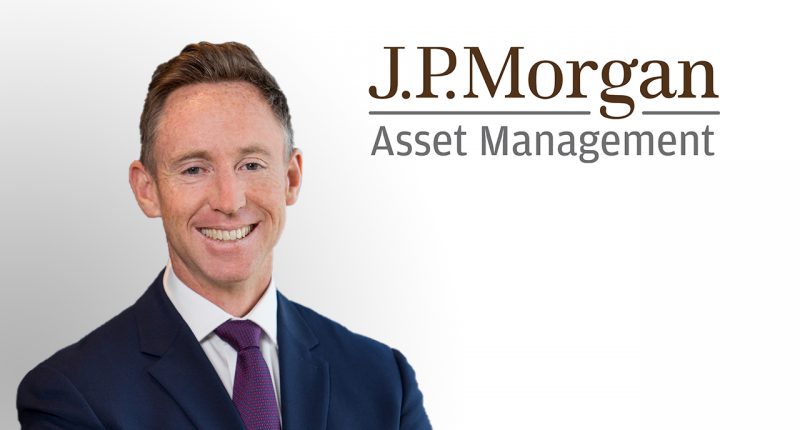A wave of optimism has washed over global equity markets in the last few weeks as investors cling to supportive policies and easing of lock down measures around the world as fears of the COVID-19 spread abate. Investors seem happy to ride this wave as it takes them towards more cyclical regions, such as Europe and emerging markets, and relatively less demanding valuations than the U.S.
The benchmark U.S. Standard & Poor’s (S&P) 500 equity index has returned to positive territory for the year. Given the relatively defensive nature of U.S. large cap stocks and the rally in the technology sector, it is perhaps not surprising that the U.S. is leading many other developed equity markets. Contrast this to the Euro area where policy support has been as aggressive but the MSCI European Economic and Monetary Union (EMU) index is still 8% below where it started the year.
The sectoral composition differences between the U.S. and European markets are well known. The 11.8% technology weight in the MSCI EMU index is less than half of the 25.7% allocation in the S&P 500. Meanwhile, more cyclical sectors such as financials, industrials, and consumer discretionary, weigh in at 43.7% in the Euro area compared to 30.2% for the U.S. The performance of the technology sector in the U.S has helped to lift returns but also valuations. The U.S. market historically trades at a premium to Europe. U.S. market current valuations are looking elevated at a forward price-to-earnings ratio of 22.6x. But neither is the MSCI EMU index looking especially ‘cheap’ trading at a multiple of 19.1x, although it is still relatively better value than the U.S.
In the broadest sense, the European equity market is more cyclical than the U.S. and has trailed the U.S. as perhaps investors require more evidence of an economic recovery to lift conviction in the region. Given the lagging performance and shift in investor sentiment, should the expected improved economic outlook materialize, this will solidify the rotation into higher beta markets, such as Europe. Furthermore, the more decisive approach to fiscal and monetary policy support by European officials in this crisis is a positive development compared to prior recessions.
The European Central Bank’s (ECB) latest action was to increase its Pandemic Emergency Purchase Program by EUR 600billion (bn), bringing the total for this one support mechanism to EUR 1.35trillion, which will run until at least June 2021. This fresh wave of stimulus is linked to the inflation outlook, which by the ECB’s own view will be below target for some time, implying that bond purchases will be around for some time as well. The support measures reflect the severity of the downturn and the latest staff projections from the ECB show an economic contraction of 8.7% in 2020 and only a slow recovery out to 2022.
European leaders have even managed to come to some agreement over a potential EUR 750bn European Recovery Fund. The more indebted Southern European economies are likely to disproportionately benefit from such a fund aiding their economic recovery. While it may take some time for the final details to be agreed and funds to be dispersed, this is not an insignificant step towards greater fiscal integration. However, given that the hope of a Eurobond was short-lived, this one step will not be enough to quell the lingering uncertainties about the European project and a broader fiscal union.
Exhibit 1: U.S. versus Europe Sectional Composition

Source: FactSet, MSCI, Standard & Poor’s, J.P. Morgan Asset Management.
Data reflect most recently available as of 09/06/20.
Investment implications
The more cyclical nature of the European equity market when combined with still strong policy support, economic activity indicators improving off of April’s lows, and a more favorable relative valuation position to U.S. equities could all add fuel to the rotation towards Europe. The more co-ordinated fiscal and monetary policy action is another supportive feature for the market.
Should risk appetite continue to improve and leave the U.S. dollar and other safe havens, the Euro may appreciate further, suggesting that domestically focused companies may fair better than those reliant on foreign trade for revenue growth.
However, much like the U.S. and elsewhere, the staggered re-opening of European economies will be reflected in the staggered performance of sectors and specific industries such as travel and tourism. Furthermore, the rotation towards cyclical markets or even cyclical sectors will only persist as long as the economic outlook continues to live up to market expectations, and is not surpassed by political or pandemic concerns once again. While seeking more attractive market positions outside of the U.S. is viable based on the improving economic backdrop, Investors need to remain cautious about riding a wave that ends up being a washout.
The Market Insights program provides comprehensive data and commentary on global markets without reference to products. Designed as a tool to help clients understand the markets and support investment decision-making, the program explores the implications of current economic data and changing market conditions.
For the purposes of MiFID II, the JPM Market Insights and Portfolio Insights programs are marketing communications and are not in scope for any MiFID II / MiFIR requirements specifically related to investment research. Furthermore, the J.P. Morgan Asset Management Market Insights and Portfolio Insights programs, as non-independent research, have not been prepared in accordance with legal requirements designed to promote the independence of investment research, nor are they subject to any prohibition on dealing ahead of the dissemination of investment research.
This document is a general communication being provided for informational purposes only. It is educational in nature and not designed to be taken as advice or a recommendation for any specific investment product, strategy, plan feature or other purpose in any jurisdiction, nor is it a commitment from J.P. Morgan Asset Management or any of its subsidiaries to participate in any of the transactions mentioned herein. Any examples used are generic, hypothetical and for illustration purposes only. This material does not contain sufficient information to support an investment decision and it should not be relied upon by you in evaluating the merits of investing in any securities or products. In addition, users should make an independent assessment of the legal, regulatory, tax, credit, and accounting implications and determine, together with their own professional advisers, if any investment mentioned herein is believed to be suitable to their personal goals. Investors should ensure that they obtain all available relevant information before making any investment. Any forecasts, figures, opinions or investment techniques and strategies set out are for information purposes only, based on certain assumptions and current market conditions and are subject to change without prior notice. All information presented herein is considered to be accurate at the time of production, but no warranty of accuracy is given and no liability in respect of any error or omission is accepted. It should be noted that investment involves risks, the value of investments and the income from them may fluctuate in accordance with market conditions and taxation agreements and investors may not get back the full amount invested. Both past performance and yields are not reliable indicators of current and future results.
J.P. Morgan Asset Management is the brand for the asset management business of JPMorgan Chase & Co. and its affiliates worldwide.
To the extent permitted by applicable law, we may record telephone calls and monitor electronic communications to comply with our legal and regulatory obligations and internal policies. Personal data will be collected, stored and processed by J.P. Morgan Asset Management in accordance with our privacy policies at https://am.jpmorgan.com/global/privacy.
This communication is issued by the following entities:
In the United States, by J.P. Morgan Investment Management Inc. or J.P. Morgan Alternative Asset Management, Inc., both regulated by the Securities and Exchange Commission; in Latin America, for intended recipients’ use only, by local J.P. Morgan entities, as the case may be.; in Canada, for institutional clients’ use only, by JPMorgan Asset Management (Canada) Inc., which is a registered Portfolio Manager and Exempt Market Dealer in all Canadian provinces and territories except the Yukon and is also registered as an Investment Fund Manager in British Columbia, Ontario, Quebec and Newfoundland and Labrador. In the United Kingdom, by JPMorgan Asset Management (UK) Limited, which is authorized and regulated by the Financial Conduct Authority; in other European jurisdictions, by JPMorgan Asset Management (Europe) S.à r.l. In Asia Pacific (“APAC”), by the following issuing entities and in the respective jurisdictions in which they are primarily regulated: JPMorgan Asset Management (Asia Pacific) Limited, or JPMorgan Funds (Asia) Limited, or JPMorgan Asset Management Real Assets (Asia) Limited, each of which is regulated by the Securities and Futures Commission of Hong Kong; JPMorgan Asset Management (Singapore) Limited (Co. Reg. No. 197601586K), which this advertisement or publication has not been reviewed by the Monetary Authority of Singapore; JPMorgan Asset Management (Taiwan) Limited; JPMorgan Asset Management (Japan) Limited, which is a member of the Investment Trusts Association, Japan, the Japan Investment Advisers Association, Type II Financial Instruments Firms Association and the Japan Securities Dealers Association and is regulated by the Financial Services Agency (registration number “Kanto Local Finance Bureau (Financial Instruments Firm) No. 330”); in Australia, to wholesale clients only as defined in section 761A and 761G of the Corporations Act 2001 (Commonwealth), by JPMorgan Asset Management (Australia) Limited (ABN 55143832080) (AFSL 376919). For all other markets in APAC, to intended recipients only.
Copyright 2020 JPMorgan Chase & Co. All rights reserved.








